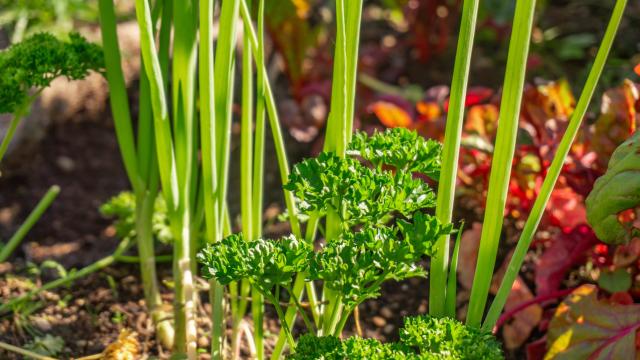If you’re getting ready to grow vegetables this year — or if you just want the most robust flowers you can get — you may want to give companion planting a try. Companion planting takes advantage of the natural properties of various plants to complement and support each other. Companion planting can help you grow better, tastier veggies — and it can save you time and money by cutting down on some of the usual maintenance and resulting in a better yield.
What is companion planting?
The basic idea behind companion planting is choosing plants with characteristics that benefit each other. While the common wisdom has been that there are some plants that are adversaries and others that are symbiotic, it’s now thought that most plants are actually cooperative, and there are only a few species that will have negative effects on each other, if properly cared for. Some of the traits that make a difference when choosing companion plants are pest deterrence, soil mineral needs, and growth structure. There are also some companion plants that attract pollinators and ones that will help to control weeds.
Choosing companion plants can be as simple as choosing one plant that has a pest problem and another that will help deter the pest, although more complicated formulas are also possible. Learning to help your garden plants work together will help your veggies and flowers thrive, and cut down on the amount of weeding, pest control, and maintenance you need to do–not to mention cutting down on watering, which will save you money.
A common example of companion planting
The most common example of companion planting is the three sisters: corn, climbing beans, and squash. These plants grow well together because the beans will naturally add nitrogen to the soil that the corn needs for growth while the corn provides a structure for the beans to climb. The squash spreads low, helping to retain moisture in the soil, as well as shading out weed. Some varieties of squash are also pest resistant because of their thorn-like fur on the vines and leaves.
More great companion combinations to consider
There are far too many configurations of companion plants to list all the possibilities here, but here are some examples to get you started. Asparagus will pair well with tomatoes, calendula, or petunias because these plants can help deter asparagus beetles. Zucchini will pair well with buckwheat and oregano because buckwheat invites friendly pest-eating insects, and oregano has some natural insecticidal properties and it produces flowers that attract pollinators.
Carrots grow well with chives, rosemary, and sage — the chives can help deter mites, aphids, and flies, and they are thought to actually improve the flavour of carrots. The rosemary and sage help by repelling carrot flies.
Use an app to learn and plan
If you’re new to companion planting but want to give it a try, or if you want to expand your experience beyond planting tomatoes with basil, the Farmer’s Almanac app can hep you identify different varieties of companion plants through a large database. It costs $US30 ($42) per year, but will help you learn from the experts without all the trial and error.

Leave a Reply
You must be logged in to post a comment.